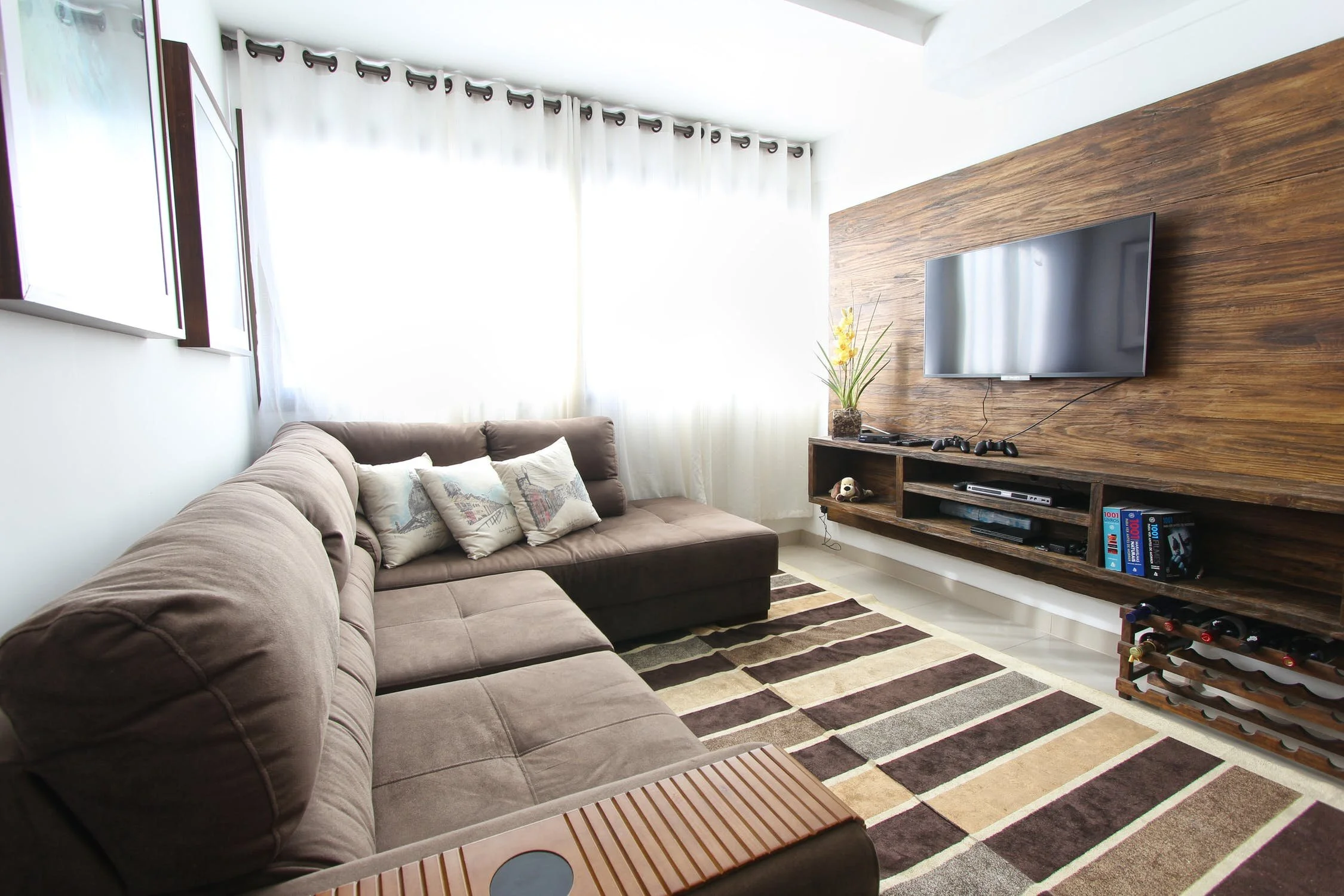Using Accent Walls Effectively
Accent walls can make a space feel rich and impressive, warm and cozy, or just simply look fun and interesting. How to get it right? Here are some tips.
Accent walls give direction: As in the picture above, a pop of color or texture in an otherwise neutral space attracts the eye, and gives a sort of natural motion to the room. In this case, the orange wall draws all the attention towards the desk and guitar, lending it importance in the white room. You can use this sense of attraction and motion to draw people through a doorway into a room, or to distract attention away from a certain area of a room that you don’t want people to focus on.
Accent walls can be created using color, texture, or patterns. This can be achieved through painting, wallpaper, tile, brick, stone, wood…you name it. A picture is worth a thousand words, so have a look at these examples:
3. Using a single neutral color throughout a home is best practice when looking for a cohesive, rich, elegant feel. Adding accent walls is one way you can achieve a different feel in one room versus another. For example, a rustic brick wall in a breakfast nook can bring a feeling of warmth and grounding to the nook versus the modern feel of the kitchen with stainless steel appliances and granite counters. Similarly, a wood wall in the theater room can bring a sense of nature to an otherwise sleek and techy space.
4. Have some fun with bringing the outdoors in - you can mimic the exterior cladding of your building to make a space feel like it was added later, or just to highlight a feeling of connection with the outdoors. If you have a brick or stone exterior cladding, then put a similar brick or stone on a wall. This can also provide a feeling of security, of structure. Our subconscious looks for reasons to believe a space is safe or unsafe, and bringing what looks loke structural elements inside can help a space feel like it is substantial and sturdy. Putting wood or fiber cement siding on an interior wall is another neat way to “bring the outdoors in.”
5. Keep it lightweight. One problem with bringing brick or stone indoors is weight. You don’t want to add stress to your building, so use an alternative. Most brick companies manufacture thin brick, 3/8” - 1/2” slices of brick that you can stick to your wall with mastic glue, and then grout with mortar to achieve the look without the weight. Same goes for stone, and there are many cultured (manufactured) stone veneers that do not weigh much at all.
Accent walls can make a positive difference in a buliding, and these tips should help. Contact us if you are looking for help with your new buildling construction or renovation, or check out our other blog posts for more tips like these.








